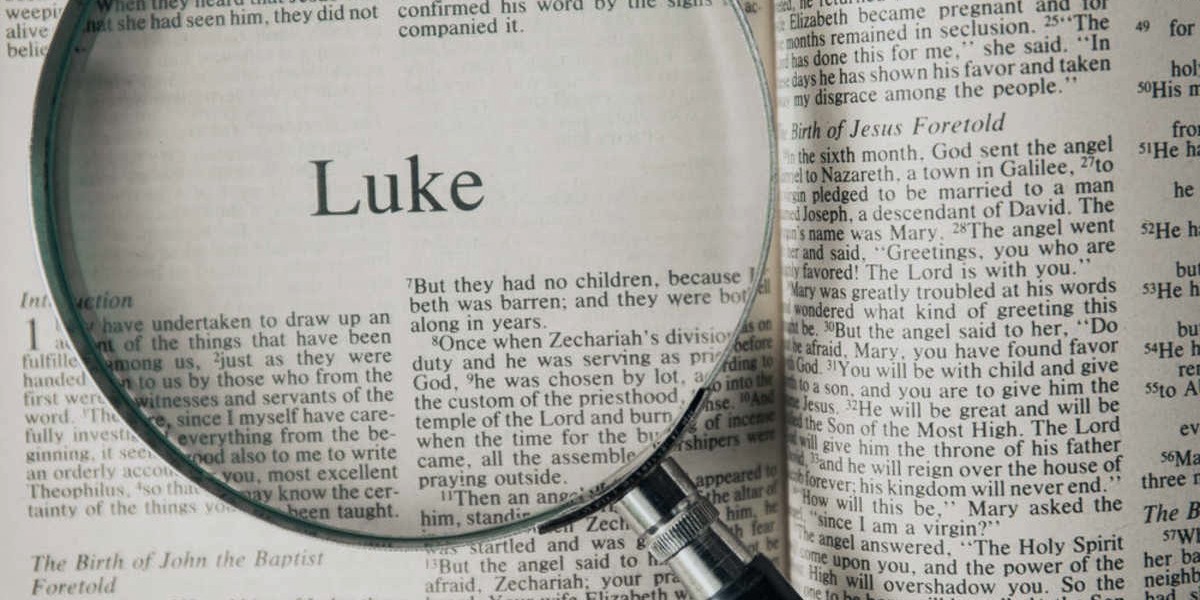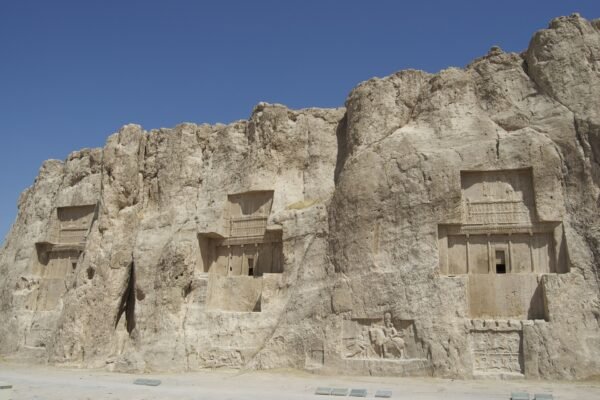Background and Scope
This is part of a series exploring how Jesus is depicted in the Gospels. Many scholars have noted that John’s Gospel proclaims a majestically high Christology. Indeed some have seen in John a Christology that finds no parallel in the other Gospels.[ref]See e.g. Raymond E. Brown, The Birth of the Messiah: A Commentary on the Infancy Narratives in the Gospels of Luke and Matthew, New Updated Edition, The Anchor Bible Reference Library (New York: Doubleday, 1993), 29-32.[/ref] To put it simply, “If Jesus was as He is depicted in Matthew and Mark and Luke, He cannot have been as He is depicted in John. The two are incompatible.”[ref]Leon Morris, The Gospel According to John, New International Commentary on the New Testament, Gen. Ed. F.F. Bruce (Grand Rapids: Eerdman’s, 1971), 45. Morris states the maxim though he disagrees with it.[/ref]
But is this contrast between John and the Synoptics accurate? Does it give a fair reading to the Christological titles and roles assigned to Jesus by the other evangelists?
The purpose of this series is to explore the Christology of all four Gospels and determine if there is indeed such a rift between John and the Synoptics. For now we will limit ourselves to the depiction of Jesus in the opening scenes of each. While all four evangelists approach Jesus’ coming into the world from a unique perspective, they all connect his entry into human history with the ministry of John the Baptist, culminating in their encounter at the Jordan.[ref]We must also put aside various questions in the text including authorship, audience, historicity, textual variants, and the Synoptic Problem. These, and other issues, will only be considered when they directly impact the question, “Do the Synoptics as we currently have them present Jesus in the highest Christological terms from the outset or is this a unique feature of John’s Gospel?” This series will answer this question by surveying the gospels in the order in which they were likely written (Mark, Matthew, Luke, John). For a defense of this chronology (Mark-Matthew-Luke-John) see Raymond E. Brown, Introduction to the New Testament, The Anchor Bible Reference Library (New York: Doubleday, 1997) 164, 217, 274, 368-371.[/ref]
Luke
Certain elements of Christology in Luke’s opening-scenes are parallel to Matthew and Mark and do not need a re-treatment here. However, Luke has unique information in his narrative that contributes to our discussion and deserves our attention. In addition Luke has a unique approach to how he frames the information. His gospel begins, not with a declaration of Jesus’ identity, but with a personal rationale for writing.[ref]Luke 1:1-4 (c.f. Matthew 1:1, Mark 1:1, John 1:1).[/ref] The narrator does not make pronouncements about Jesus’ identity; he allows it to be revealed through the narrative itself, in the words of Spirit-filled people, prophets, angels, Jesus, John, and finally God Himself.[ref]Darrell L. Bock, Luke, The IVP New Testament Commentary Series, ed. Grant R. Osborne (Downer’s Grove, IL: InterVarsity Press, 1994), 33.[/ref] Thus it is the narrative, not the narrator that serves to express Luke’s Christology.[ref]For a full treatment see Mark Coleridge, The Birth of the Lukan Narrative: Narrative as Christology in Luke 1-2, Journal for the Study of the New Testament, Supplement Series, 88, (Sheffield, England: Sheffield Academic Press, 1993).[/ref]
Luke’s opening scenes set the tone for what is revealed throughout his two-part work, namely that Jesus is Lord and Christ,[ref]C.f. Luke 1:43; 2:11; Acts 2:36; 10:36. Luke is also concerned to show the salvation of the Gentiles, the rejection of Jesus by the Jews, the prophetic role of the Spirit, and the Christological statement that Jesus fulfills Davidic promises. See Mark L. Strauss, The Davidic-Messiah in Luke-Acts: The Promise and its Fulfillment in Lukan Christology, Journal For the Study of The New Testament Supplement Series, 110, Ex. Ed. Stanley E. Porter, (Sheffield, England: Sheffield Academic Press, 1995), 84-85.[/ref] the promised Savior of the world.[ref]Norval Geldenhuys, Commentary on the Gospel of Luke, The New International Commentary on the New Testament, Gen. Ed. F.F. Bruce (Grand Rapids, MI: WM. B. Eerdman’s Publishing Company, 1983), 43-44. See also Bock, 30.[/ref] This claim is established primarily through the juxtaposition of Jesus and the Baptist.[ref]Joel B. Green, The Theology of the Gospel of Luke, New Testament Theology, Gen. Ed. James D.G. Dunn (Cambridge: Cambridge University Press, 1995), 54ff.[/ref] Along these lines biblical scholar Raymond Brown offers an outline of Luke 1-2 in seven episodes that will aid us here.[ref]Raymond E. Brown, The Birth of the Messiah: A Commentary on the Infancy Narratives in the Gospels of Luke and Matthew, New Updated Edition, The Anchor Bible Reference Library (New York: Doubleday, 1993), 250.[/ref] Let us examine these episodes.
Annunciation of John the Baptist’s Conception & Birth
Luke is concerned with showing God’s faithfulness to His promises. The annunciation of a miraculously conceived, Spirit-filled prophet to turn people back to God signals God’s redemptive activity after centuries of silence.[ref]Bock, 34.[/ref] Of importance for us is that the prophet will “turn…the sons of Israel back to the Lord their God” by going “before Him” (Luke 1:16-17). Thus John is a forerunner to none other than “the Lord their God.”
The Annunciation of Jesus’ Conception & Birth
Gabriel tells Mary who will inhabit her womb and how this will take place, given that she is a virgin. She will have a Son, to be named Jesus.[ref]We have noted the meaning of the name previously (“God/Yahweh saves”); in Luke its salvific import is particularly significant.[/ref] This Son will be great,[ref]Jesus is “great” in an unqualified sense vs. John who is “great in the sight of the Lord” (Luke 1:15).[/ref] and will be called the Son of the Most High. He will receive the throne of David[ref]Jesus’ legal Davidic lineage was passed from Joseph (Bock, 40).[/ref] from God Himself, and will reign eternally as King. The conception will occur by the Holy Spirit coming upon Mary and the Most High overshadowing her. As a result the “holy”[ref]Jesus is “holy” in an unqualified sense. Later “holy” is given as a name of God (Luke 1:49).[/ref] child will be called the “Son of God.”
Gabriel’s description of Jesus is a free rendering of 2 Samuel 7:8-16 that moves past Old Testament expectation to New Testament Christology.[ref]C.f. Brown, Birth, 310-314 where he also provides an impressive comparison/contrast between the annunciations of the conceptions/births of John and Jesus.[/ref] Not only will Jesus fulfill the expectation of a coming Davidic Messiah, but He is by nature the very “Son of God/Most High.”[ref]Contra Strauss, 338 who sees Luke’s primary emphasis as being that Jesus is the Davidic Messiah. For Strauss Jesus’ divine Sonship is a function of His messianic identity, we contend that His messianic identity rests upon His divine Sonship. Our view is supported by Matthew 11:27 (c.f. Mark 12:6, Luke 10:22). See also F.F. Bruce, The Gospels & Epistles of John (Grand Rapids: Eerdman’s Publishing, 1983), 55.[/ref] The name is given to “indicate the absolute uniqueness and highness of His divine Sonship… [in the annunciation] we have an impressive testimony to the divine greatness of Jesus—a greatness wholly different from that of any human being.”[ref]Geldenhuys, 76.[/ref]
Further, Jesus will reign forever. The point at which this differs from Nathan’s prophecy to David is paramount. David was promised an eternal throne or kingdom for his descendants, while Jesus will Himself rule forever, indicating His eternal nature.[ref]Ibid., 76. Contra Brown, Birth, 313-314, who in order to maintain his ever-strained theory of the evolution of Christology in the early Church and the uniqueness of John’s incarnational thought insists that Luke knew nothing of a pre-existent Son, only one begotten in Mary’s womb. Does Brown suppose that Luke envisioned the creation, rather than the arrival of an eternal being in Mary’s womb?[/ref] How might such an eternal being find its way into the womb of a virgin?[ref]On the question of Mary’s virginity in Luke see Brown, Birth, 298-300. Bock, 40, states unequivocally that she is a virgin (c.f. Luke 1:27, 34). On the question of the virgin birth as a historical fact see opposing arguments in Geldenhuys (72-73 & 107-108) and G.B. Caird, The Gospel of St. Luke, The Penguin New Testament Commentaries (London: Penguin Group, 1990), 53.[/ref] Through the creative work of the Holy Spirit[ref]Brown sees echoes of the Holy Spirit at creation (Gen 1:2) and foreshadowing of the Mount of Transfiguration where the overshadowing of God’s presence establishes and confirms Jesus’ divine Sonship (Brown, Birth, 315).[/ref] and the overshadowing of God’s power. Thus, the birth announcement highlights Jesus’ position, authority, and divine identity.[ref]C.f. Bock, 41-42. However, Bock does not think that the players in Luke’s gospel, or its first readers would have understood ontological deity from this annunciation, rather they would have heard only “Messiah/King.” While this may be true of the players his comments regarding the readers are hardly conclusive given the language of eternity, supernatural conception, and holiness ascribed to the child.[/ref]
Mary’s Visitation of Elizabeth
The juxtaposition of John and Jesus is heightened by the encounter between their pre-natal mothers.[ref]Brown, Birth, 342-343.[/ref] Elizabeth’s words[ref]Given prophetic weight by inspiration of the Holy Spirit (Luke 1:41). C.f. Bock 33-34, Geldenhuys, 82.[/ref] confirm that John the Baptist has begun his ministry of proclamation while still in the womb.[ref]Brown, Birth, 341, c.f. Bock, 43.[/ref] She answers the joyful proclamation in faith by stating that Mary is the “mother of my Lord.” Mary’s poetic response is made up almost entirely of Old Testament allusions[ref]Geldenhuys, 84-85.[/ref] and professes in faith that what God has promised has already been put into effect through the miraculous conception of a Child within her.[ref]Green, 50.[/ref] For our purposes we draw attention to the fact that she identifies God as Lord, Savior and holy (Luke 1:46-47, 49), ascriptions also made to Jesus in Luke’s narrative (Luke 1:43, 2:11, 1:35).
Birth, Circumcision, & Naming of John the Baptist
Of particular interest to us is Zacharias’ Benedictus, a spirit-inspired prophecy (Luke 1:67ff). His hymn[ref]Like the Magnificat it is also drawn from numerous Old Testament allusions. C.f. Geldenhuys, 92-93.[/ref] speaks of Jesus, then of John’s relationship to Him, and again of Jesus, placing the two in stark contrast. Jesus is the servant of the house of David, the horn of salvation that has been raised up.[ref]The background is Psalm 18, where significantly, God is the “horn of salvation.”[/ref] Zachariah proclaims that God has visited his people and accomplished redemption.[ref]The aorist verbs point to the fact that God’s promise is sufficient to ensure its fulfillment.[/ref] Conversely Zacharias’ child will be “prophet of the Most High”[ref]Compare with Jesus, “Son of Most High” (Luke 1:32).[/ref] who will go before the LORD to prepare His way. To those who sit in darkness, God will come like Sunrise[ref]Geldenhuys, 95.[/ref] to bring knowledge of salvation, forgiveness of sins, and tender mercies.
The view of Darrell L. Bock[ref]Bock, 52-53.[/ref] and Raymond Brown[ref]Brown, Birth, 390-391.[/ref] that Luke pictures Jesus only as the agent of God’s light and salvation is simply inadequate. Conversely G. B. Caird articulates the full import of Zacharias’ prophecy when he writes, “The child…was sent to prepare the way for the coming of God. But how was God to come? Luke’s answer is that he came in the coming of his Son, that the whole life and ministry of Jesus was the promised coming or visitation of God.”[ref]Caird, 52. “Four times Luke describes the ministry of Jesus as a divine visit. God has…visited and redeemed his people (1:68; cf. 1:78, 7:16, 19:44)…The coming of the Savior was the coming of God.” (Caird, 35). Sadly Caird follows this stroke of inspiration with denials of the virgin birth, the sinless nature of Jesus, and His deity. Overall he fails in his task of exegeting Luke’s Christology because he is too busy judging it as non-historical.[/ref]
Birth, Circumcision, & Naming of Jesus
John now disappears from the picture until adulthood and Jesus’ humble birth is contrasted sharply with the announcement of His arrival to the shepherds.[ref]Bock, 55.[/ref] The “glory of the Lord”, indicative of God’s tangible presence in the earth,[ref]Thus it is natural that the heavenly host arrive, they dwell in the glorious presence of God (Brown, Birth, 426-427).[/ref] accompanies the angel of the Lord[ref]Geldenhuys, 111.[/ref] whose declaration is “today in the city of David there has been born for you a Savior, who is Christ the Lord.”[ref]Brown sees the background for this in Isaiah 9:5-6, an appealing theory, but one that he divests of its meaning by changing “Mighty God” in the passage to “divine hero” in order to accommodate his view that Luke knows nothing of the deity of Christ (c.f. Birth, 424-425).[/ref] Here is Luke’s Christology in a succinct formula, identifying the Messiah as “Lord” and “Savior”, terms he uses interchangeably for God and Jesus.[ref]One wonders if this is why Bock softens the impact of the titles by reducing Lord to “Master” and Savior to “Redeemer” (Bock, 55). Whatever his motivation the effect is a diminishing of the annunciation.[/ref]
Presentation in the Temple
Jesus’ presentation in the temple is highlighted by the responses of Simeon and Anna, two elders cast in the mold of Old Testament saints, “agog for the coming of the Gospel.”[ref]Caird, 63.[/ref] Anna’s testimony is characterized by her gratitude for God’s redemptive work, Simeon’s by his recognition that this baby is the promised consolation, salvation, and glory of his people, as well as the light to the Gentiles.[ref]Bock, 57-59. Simeon came into the temple “in the Spirit”, thus his words bear prophetic weight.[/ref]
Discovery of Jesus in the Temple
Jesus’ encounter with the teachers in the temple produced amazement because of his understanding and awareness.[ref]Luke 2:46-47. C.f. Bock, 62.[/ref] But it was His first recorded words, “…Did you not know that I had to be in my Father’s house”[ref]Luke 2:49b. “Father’s house” (e.g. NASB) is preferred over “Father’s business” (e.g. NKJV) although in both cases the disputed word is supplied by the translator. Jesus is in the house of God (the temple) and is thus identifying himself with God’s “family”, place and purposes (Bock, 63).[/ref] that bear our attention. In an incident unique to Luke’s gospel the twelve-year-old Jesus speaks for Himself and states His awareness of His identity as God’s Son already beginning to perform His Father’s will.[ref]So Bock, 63. Contra Brown (Birth, 483) who does not think Jesus’ words indicate a self-awareness of His identity as Son of God. One is left to wonder what Brown thinks the words are intended to convey! For an alternate view see Caird (66) who proposes that Jesus is gradually becoming aware of a special relationship with God.[/ref]
Encounter at the Jordan
For the purposes of our discussion Luke offers little in regards to John’s ministry that has not been surveyed already. John foretells a mightier coming One who is infinitely greater than Him and offers an infinitely greater baptism. This baptism is with “the Holy Spirit and fire”,[ref]Luke 3:16. The coming of the Spirit should be taken in all its “eschatological force” (Strauss, 81-82).[/ref] a phrase that carries connotations of salvation and judgment.[ref]Bock, 73.[/ref] Jesus is baptized by John, the Spirit descends in bodily form as a dove, the heavens open and a voice says, “You are My beloved Son, in You I am well-pleased.”[ref]Our comments on the significance of these events for Mark and Matthew apply to Luke as well.[/ref]
Unique to Luke however is the inclusion of the final phrase from Isaiah 40:5, left off by the other evangelists in John’s preaching, “And all flesh will see the salvation of God.”[ref]Luke 3:6 (c.f. Matthew 3:3, Mark 1:3, John 1:23). For comment see Caird, 71.[/ref] This fits nicely with Luke’s pervasive theme that to see Jesus is to see God’s salvation. Luke also emphasizes Jesus’ role as Judge in John’s teaching, further highlighting the contrast of John and Jesus, and Jesus’ utter uniqueness in relation to humanity.[ref]Ibid., 74-75.[/ref]
We should also note that the Baptist’s words in Luke 3:16 are connected to the question of the people as to whether he was the Christ.[ref]C.f. Luke 3:15.[/ref] This is reminiscent of the interchange with the Baptist in John’s gospel.[ref]John 1:20-23. See Bock, 73 for a discussion.[/ref] While both Luke and John may be interested in quieting a Baptist sect[ref]C.f. Green, 54-55 and Morris, 87-88.[/ref] we should not let that distract us from what is clearly the aim of both evangelists in these passages; to exalt Jesus as the Christ.
Summary
Thus Luke presents a majestically high Christology, supported by his recording of certain events surrounding the conception, birth and childhood of John and Jesus. For Luke Jesus is the Christ, the Son of David, the Son of God, the fulfillment of God’s Old Testament promises to His people. But He is more than that. He is holy, eternal, Lord and Savior. Some will insist that John stands alone in his incarnational theology, but Luke clearly conveys his own sense of this reality as expressed in his narrative. Jesus is God’s salvation incarnate, He is God’s glory incarnate, He is God’s holiness incarnate. In short, He is the Man in whom God visits the earth to redeem it.[ref]Geldenhuys, 45.[/ref]
PDF Original Version
As a believer who has been recreated to lead through Christ, it is important to recognize that you are also a theologian. Theology gives you the tools to examine your own beliefs about God, and also helps you communicate Christian beliefs in a meaningful way that others can understand. You can become better equipped in your daily influence for Christ by taking advantage of the following resources:
- Read Why You Should Care About Theology.
- Read other articles in our God Thoughts category.
- Join Artios Christian College‘s diverse community of students and instructors who recognize the significance of theological tools in their development as Christian leaders. LEA 111 Essentials of Vibrant Leadership is a great introductory course.








